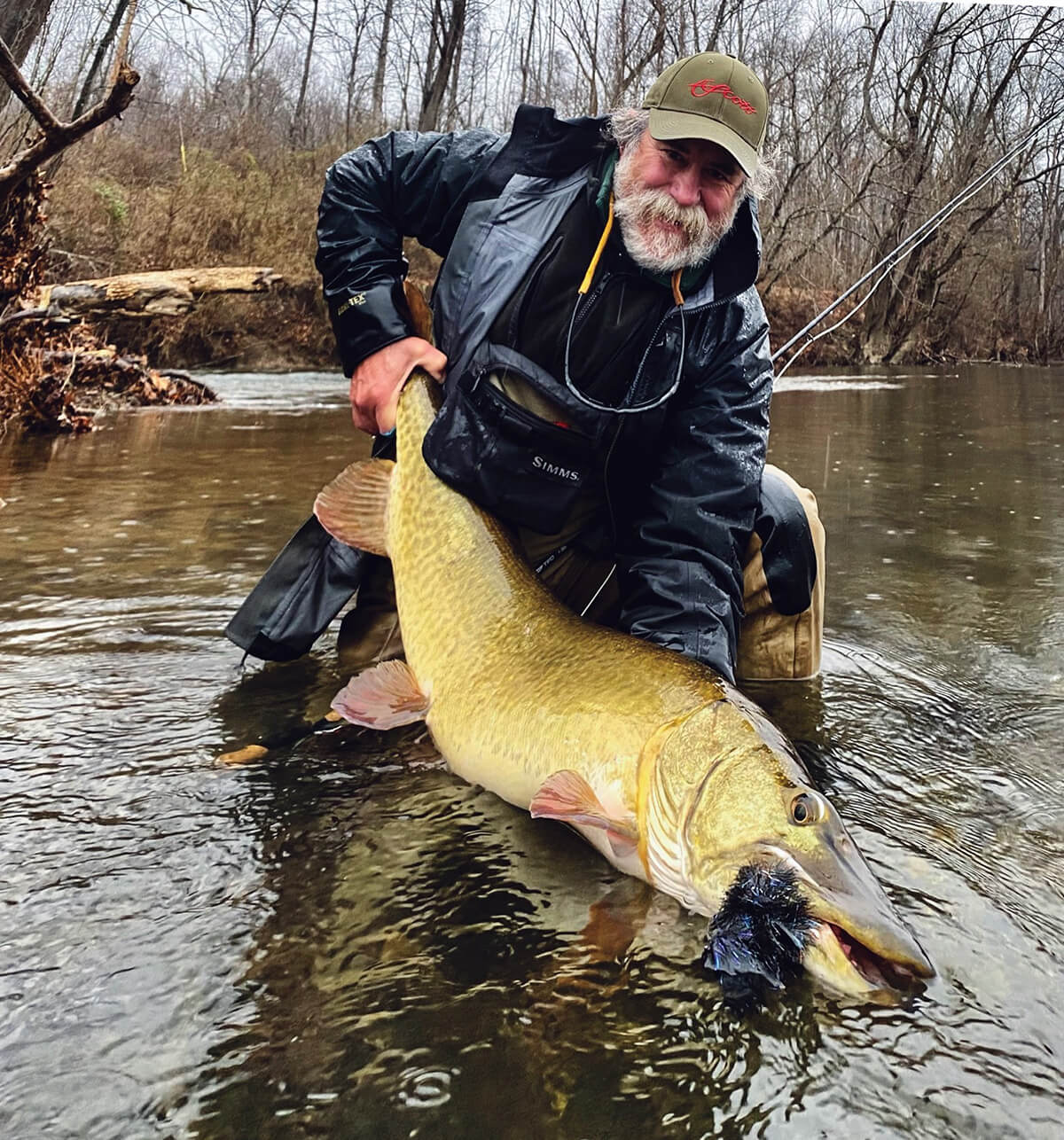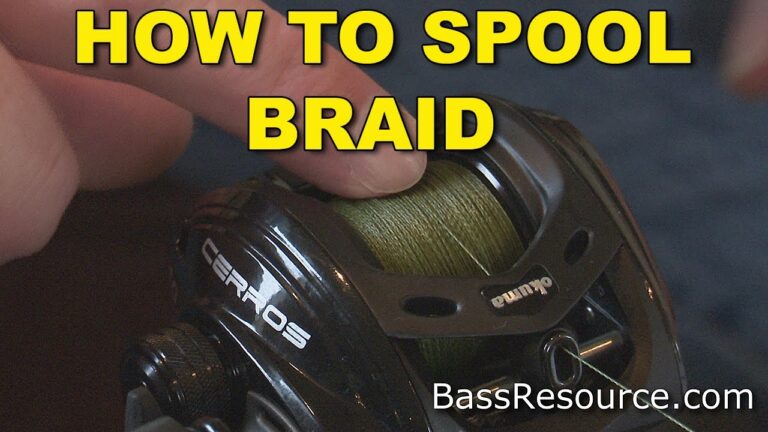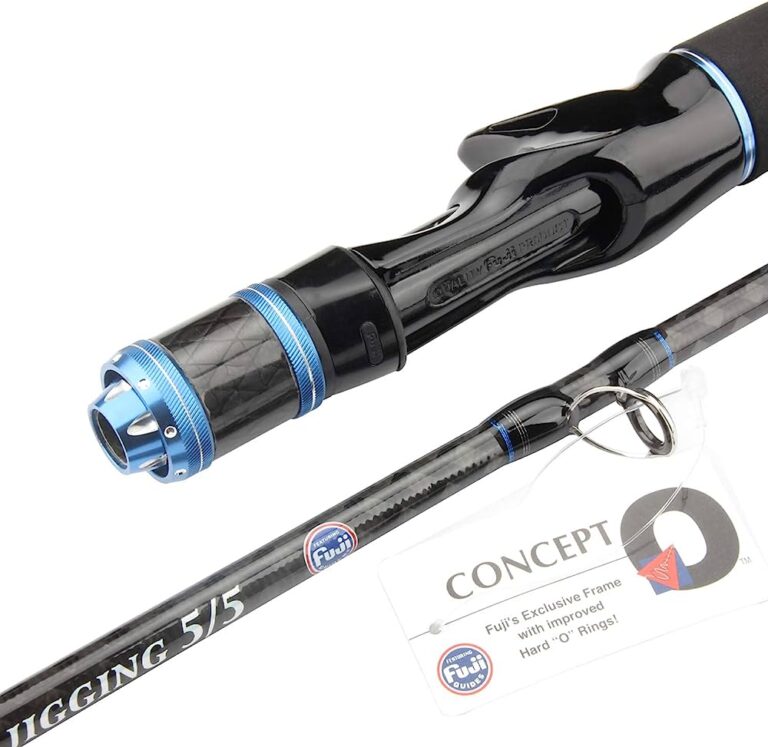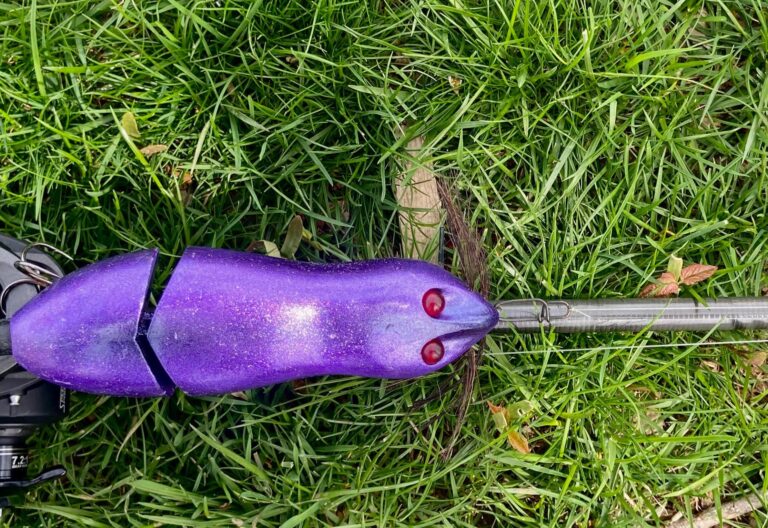To cast an old baitcasting reel, hold the rod with your dominant hand while pressing and holding the reel’s release button. Then, using a smooth and controlled motion, swing the rod backward behind you before swiftly bringing it forward and releasing the button to cast your line.
When it comes to fishing with an old baitcasting reel, it’s important to know how to properly cast to ensure a successful and accurate fishing experience. The process may seem daunting at first, but with practice, you can master it.
We will guide you through the steps of casting an old baitcasting reel, giving you the confidence to enjoy a productive day of fishing. Follow the simple instructions below to cast your line effectively and efficiently with an old baitcasting reel. With a little patience and determination, you’ll soon be reeling in those big catches like a pro.

Credit: www.flyfisherman.com
Understanding The Basics Of Baitcasting Reels
Baitcasting reels have been used by anglers for many years, and there’s something special about using an old baitcasting reel that adds to the charm of fishing. Understanding the basics of operating these reels is essential to ensure smooth and successful casting.
In this section, we will discuss the benefits of using an old baitcasting reel, common issues you may encounter, and the importance of proper casting technique.
Benefits Of Using An Old Baitcasting Reel:
- Durability: Old baitcasting reels were built to last, with solid construction and sturdy materials that can withstand the test of time.
- Versatility: These reels offer a greater level of control and precision, allowing anglers to cast accurately and place their bait or lure where they want.
- Smooth drag: The drag system on old baitcasting reels is often superior to newer models, providing a smooth and consistent drag pressure.
- Nostalgic appeal: Using an old baitcasting reel can evoke a sense of nostalgia and tradition, connecting anglers to the heritage of fishing.
Common Issues With Old Baitcasting Reels And How To Address Them:
- Backlash: One common issue with baitcasting reels is backlash, which occurs when the spool overruns the line, causing tangles. To avoid backlash, start with a lighter lure and gradually increase the weight as you become more comfortable with the reel. Adjusting the reel’s braking system and thumbing the spool during the cast can also help prevent backlash.
- Line twist: Old baitcasting reels may be more prone to line twist, which can reduce casting distance and lead to tangles. To minimize line twist, ensure that the line is spooled properly and properly lubricate the reel. Additionally, using a swivel or a monofilament leader can help prevent line twist.
- Increased maintenance: Older reels require more regular maintenance compared to newer models. It’s crucial to clean and lubricate the reel regularly to ensure its smooth operation. Pay particular attention to the drag system, gears, and bearings.
Importance Of Proper Casting Technique:
Proper casting technique is crucial for maximizing the performance of an old baitcasting reel. Here are some essential points to keep in mind:
- Thumb control: Use your thumb to control the spool’s speed during the cast, preventing excessive line release and minimizing the risk of backlash.
- Smooth motion: Maintain a smooth and fluid motion throughout the cast, avoiding jerky movements that can disrupt the line’s flow.
- Timing: Timing is critical when casting with a baitcasting reel. Release the thumb from the spool at the right moment, as the rod reaches its maximum flex, to achieve optimal casting distance.
- Practice makes perfect: Regular practice is key to improving your casting technique. Find an open area and spend time honing your skills to become proficient with your old baitcasting reel.
Understanding the basics of baitcasting reels, including the benefits they offer, common issues you may face, and the importance of proper casting technique, will help you make the most of your old baitcasting reel. Take the time to learn and practice these fundamental aspects to enhance your fishing experience and increase your chances of landing the big one.
Mastering The Grip And Control
When it comes to casting an old baitcasting reel, mastering the grip and control is crucial for achieving accurate and smooth casts. Proper hand placement, selecting the right baitcasting reel, and adjusting the reel’s drag and braking system all play a significant role in maximizing your casting performance.
In this section, we will delve into these key aspects in detail.
Selecting The Right Baitcasting Reel For Your Needs
Choosing the right baitcasting reel is the first step toward mastering your casting techniques. Consider the following points when selecting the reel that suits your needs:
- Gear ratio: Opt for a reel with a gear ratio that matches the type of fishing you will be doing. Higher gear ratios provide quicker retrieves, while lower gear ratios offer more power for handling larger fish.
- Ball bearings: Look for reels with multiple ball bearings as they contribute to smooth casting and retrieval. The more ball bearings, the smoother the operation.
- Frame material: Baitcasting reels can be constructed using aluminum, graphite, or a combination of both. Aluminum reels are sturdier and more durable, whereas graphite reels are lighter and more corrosion-resistant.
- Line capacity: Consider the fishing conditions and the type of line you plan to use. Ensure that the reel has adequate line capacity to handle the fishing environment.
Proper Hand Placement For Optimal Control
To achieve optimal control and accuracy, your hand placement on the baitcasting reel is vital. Follow these guidelines for proper hand placement:
- Place your dominant hand on the reel’s handle and grasp it firmly. Your thumb should rest on the reel’s spool tension knob.
- Rest your index finger lightly on the front of the reel, just above the reel seat.
- Keep your remaining fingers curled comfortably around the reel’s frame.
- Maintain a relaxed grip to allow for smooth and fluid movement during casting.
Adjusting The Reel’S Drag And Braking System
The reel’s drag and braking system play a crucial role in preventing backlash and ensuring controlled casts. Follow these steps to adjust these settings:
- Adjusting the drag: Turn the drag star located on the reel’s handle clockwise to tighten the drag and counterclockwise to loosen it. The drag should be set according to the size and strength of the fish you are targeting.
- Adjusting the braking system: Baitcasting reels typically have a centrifugal or magnetic braking system. Consult the reel’s manual for instructions on adjusting these systems. Start with a moderate setting and make adjustments as needed, depending on the wind conditions and the weight of your lure.
Mastering the grip and control of an old baitcasting reel is essential for any angler looking to improve their casting skills. By selecting the right reel, placing your hand correctly, and adjusting the drag and braking system, you’ll be well on your way to achieving accurate and effortless casts.
So, practice these techniques and get ready to reel in those trophy catches with confidence!
Perfecting Your Casting Technique
Casting with an old baitcasting reel can be a challenging task, but with the right technique and a few tips, you can cast like a pro. In this section, we will discuss how to set up your reel for casting success, choose the right lure and line, and provide a step-by-step guide to casting with an old baitcasting reel.
Setting Up Your Reel For Casting Success
To ensure a successful cast with your old baitcasting reel, it is essential to set it up properly. Here are a few key points to keep in mind:
- Check the drag system: Before casting, make sure the drag system is properly adjusted. This will prevent the line from tangling and ensure a smoother cast.
- Spool tension control: Adjust the spool tension control knob to ensure the proper amount of resistance on the spool. This will help control the line and prevent backlash during casting.
- Thumb pressure: Develop a good thumb control technique to apply pressure on the spool during the cast. This will help control the speed and distance of your cast.
- Practice, practice, practice: Take the time to practice and familiarize yourself with your reel’s settings. This will allow you to fine-tune the setup and improve your casting skills.
Choosing The Right Lure And Line For Casting
The choice of lure and line can greatly impact your casting performance. Consider the following points when selecting your gear:
- Lure selection: Choose a lure that matches the target species and the conditions you will be fishing in. Different lures have different weights and sizes, which can affect your casting distance and accuracy.
- Line selection: Select the appropriate line for your baitcasting reel. Monofilament, fluorocarbon, and braided lines all have different characteristics that can impact casting. Consider the line’s diameter, strength, and visibility when making your choice.
Step-By-Step Guide To Casting With An Old Baitcasting Reel
Follow these steps to improve your casting technique with an old baitcasting reel:
- Grip the rod: Hold the rod with a relaxed grip, ensuring your index finger is on the line release button.
- Adjust drag and spool tension: Set the drag system and spool tension control knob according to the lure weight and fishing conditions.
- Aim and target: Focus on your target and adjust your body position accordingly.
- Load your rod: Bring the rod back in a smooth but controlled motion, loading the rod with potential energy.
- Release the line: As the rod reaches its maximum load, press and hold the line release button to let the line flow.
- Follow through: Allow the rod to complete its motion, keeping your thumb on the spool to control the line’s speed and prevent backlash.
- Practice and adjust: Continuously practice your casting technique, adjusting the settings as needed for better performance.
Mastering the art of casting with an old baitcasting reel takes time and practice, but with these tips in mind, you’ll be well on your way to casting success. Remember to be patient and persistent, as casting is a skill that improves with experience.
Happy fishing!
Troubleshooting Common Casting Problems
Casting with an old baitcasting reel can be a challenging task, especially when it comes to avoiding common casting problems such as backlash and bird’s nest tangles. These issues can ruin your fishing experience, but fear not, as there are solutions to overcome them.
Additionally, fine-tuning your casting distance and accuracy can greatly improve your chances of landing that big catch. Lastly, paying attention to reel handling during casting is crucial to prevent any mishaps. Let’s dive into these troubleshooting techniques and make your casting experience a breeze.
Overcoming Backlash And Bird’S Nest Tangles:
- Backlash and bird’s nest tangles occur when the spool spins faster than the line can be released, causing the line to bunch up and tangle.
- To avoid backlash, ensure that your spool tension knob is properly adjusted. Start by tightening the knob until the lure slowly falls toward the ground, then gradually loosen it until the lure drops smoothly without any resistance.
- Another way to prevent backlash is by using your thumb as a brake. Apply light pressure on the spool with your thumb while casting, gradually releasing it as the lure travels through the air.
- If you do experience a backlash or bird’s nest, it’s important not to panic. Carefully remove any tangles by gently pulling the line or using a pair of scissors to cut it free. Taking your time and being patient is key to untangling the mess without damaging your line or reel.
Fine-Tuning Your Casting Distance And Accuracy:
- Casting distance and accuracy are essential for successful fishing. To improve your casting distance, focus on the following tips:
- Use a proper casting technique, involving a smooth and controlled motion with your rod and reel.
- Optimize your lure weight and line type according to the specifications of your reel.
- Practice different casting styles, including sidearm and overhead casts, to find what works best for you.
- For enhanced casting accuracy, consider these suggestions:
- Aim for a specific target, whether it’s a particular spot in the water or a specific structure.
- Adjust your reel’s magnetic or centrifugal brake system to control the lure’s trajectory during the cast.
- Take wind and other environmental factors into account, as they can affect your casting accuracy.
Addressing Reel Handling Issues During Casting:
- Proper reel handling plays a significant role in preventing casting problems. Here are some essential tips:
- Hold the rod and reel combo firmly but not too tightly. Maintain a relaxed grip to allow for smooth casting and easy line release.
- Keep your thumb in contact with the spool during the cast to provide additional control and prevent backlash.
- Practice your timing and release to ensure a fluid motion throughout the cast.
- Avoid forcefully “slamming” the rod forward during the cast, as this can cause the line to backlash or tangle.
Remember, troubleshooting common casting problems requires practice, patience, and a good understanding of your old baitcasting reel. By mastering these techniques and focusing on improving your casting distance, accuracy, and reel handling, you’ll be well on your way to becoming proficient with your old baitcasting reel.
Happy fishing!
Maintenance And Care For Long-Term Performance
Taking proper care of your old baitcasting reel is crucial to ensure its long-term performance. Regular maintenance and careful storage can significantly extend the lifespan of your reel. In this section, we will discuss three important aspects of maintenance and care: cleaning and lubricating your reel, checking and replacing damaged or worn-out parts, and storing your reel properly.
Cleaning And Lubricating Your Old Baitcasting Reel
To maintain optimal performance, it is essential to keep your old baitcasting reel clean and well-lubricated. Here are some key points to remember:
- Regularly clean your reel to remove dirt, debris, and old lubricants. Use a soft cloth or brush to gently wipe down the exterior and remove any build-up.
- Disassemble the reel carefully, following the manufacturer’s instructions, and clean each part individually. Ensure that you remove any dirt or residue from the gears, bearings, and brake system.
- Use a high-quality reel cleaner or mild detergent mixed with water to clean the parts effectively. Avoid using harsh chemicals that could damage the reel’s components.
- After cleaning, thoroughly dry each part before reassembling the reel. Moisture can lead to corrosion and damage the internal mechanisms.
- Apply a suitable reel lubricant to the gears, bearings, and other moving parts. Lubrication helps reduce friction and ensures smooth operation. Be sure to use a lubricant specifically designed for baitcasting reels.
- Excess lubrication can attract dirt and contaminants, so apply just enough to provide adequate protection. Wipe off any excess lubricant before reassembling the reel.
Checking And Replacing Damaged Or Worn-Out Parts
Regularly inspecting your old baitcasting reel for any damaged or worn-out parts is essential for maintaining its performance. Consider the following points:
- Check the handle, drag system, and spool tension knob for any signs of wear or damage. These areas are often subject to the most stress during use.
- Inspect the gears and bearings for any signs of excessive wear or corrosion. If you notice any grinding or roughness, it may be time to replace these parts.
- Ensure that the brake system is in good condition and functioning properly. A malfunctioning brake can negatively affect your casting accuracy and distance.
- Check the line guide for any sharp edges or grooves that can damage your fishing line. If necessary, replace the line guide to prevent unnecessary line breakage.
- Replace any damaged or worn-out parts promptly to avoid further damage to your old baitcasting reel and maintain its optimal performance.
Storing Your Reel Properly For Extended Lifespan
Proper storage is vital to protect your old baitcasting reel when not in use. Follow these guidelines for optimal storage:
- Before storing your reel, clean and lubricate it as mentioned earlier. This step ensures that the reel is free from any dirt or moisture that could lead to corrosion during storage.
- Use a reel case or bag to protect your reel from dust, sunlight, and other external elements that can cause damage. Avoid storing your reel in excessively hot or humid environments.
- Consider removing the fishing line from the reel to prevent it from getting tangled or damaged during storage.
- Store your baitcasting reel in a cool, dry place, away from direct sunlight or extreme temperatures. Ideally, place it in a protective case or reel bag to shield it from potential damage.
- Regularly check and inspect your stored reel to ensure that it remains in good condition. Address any issues promptly to prevent further damage or deterioration.
By following these maintenance and care tips, you can keep your old baitcasting reel in optimal condition for long-term performance. Regular cleaning, lubrication, part inspection, and proper storage will not only extend its lifespan but also enhance your fishing experience.
Keep your reel well-maintained, and it will continue to serve you well for years to come.
Expert Tips To Improve Your Baitcasting Skills
Baitcasting reels are a popular choice among anglers, but mastering their use can take some practice. Whether you’re a beginner looking to cast an old baitcasting reel or a seasoned angler searching for ways to enhance your skills, these expert tips will surely help you improve your baitcasting technique.
Practicing Casting Drills To Enhance Accuracy And Control
- Focus on technique: Start by practicing the basic casting technique, also known as the overhead cast. Mastering this fundamental skill will provide a solid foundation for further refinement.
- Utilize target practice: Set up targets, such as hula hoops or buckets, to aim your casts accurately. This will improve your casting accuracy and precision.
- Increase distance progressively: Begin with short-range casts and gradually work your way up to longer distances. This will help develop a smooth and controlled casting motion.
Adjusting Your Casting Technique For Different Fishing Situations
- Consider the wind: When casting with a baitcasting reel in windy conditions, adjust your technique to maintain control. Angle your body slightly into the wind and lower your casting to reduce air resistance.
- Adapt to different lures: Experiment with different casting techniques based on the type of lure you’re using. For lighter lures, opt for the sidearm cast, while heavier lures may benefit from an overhead cast.
- Master the pitch and flip: Learn the pitching and flipping techniques to accurately place your bait in tight spots. These techniques are especially useful when targeting structure or cover.
Utilizing Advanced Casting Techniques For Better Results
- Try the roll cast: When dealing with obstacles or tight spaces, the roll cast can be a useful technique. It allows you to make accurate casts without the need for a large backswing.
- Practice the pendulum cast: The pendulum cast is ideal for long-distance casting, providing smooth and efficient energy transfer. Proper body rotation and timing are crucial for executing this technique effectively.
- Implement the skipping cast: When fishing near the water’s surface, mastering the skipping cast can prove advantageous. This technique involves casting the bait with an upward trajectory, causing it to skip across the water’s surface.
Remember, mastering the art of baitcasting takes time and practice. By dedicating time to these expert tips and adjusting your technique to suit various fishing situations, you’ll develop the skills needed to cast an old baitcasting reel with precision and control.
So, head out to the water and give these tips a try, as practice truly does make perfect.
Conclusion
Mastering the art of casting an old baitcasting reel can be a challenging but rewarding endeavor. By following the steps outlined in this blog post, you can improve your casting skills and optimize the performance of your reel. Remember to start with the proper setup and practice your technique to achieve accurate and smooth casts.
Understanding the importance of adjusting the brakes and improving your thumb control will help you avoid backlash and tangles. Regular maintenance and cleaning will also ensure the longevity of your reel. Whether you are a beginner or an experienced angler, these tips will help you get the most out of your old baitcasting reel.
So don’t let its age hold you back from enjoying a successful fishing experience. Get out there, practice, and cast like a pro!




